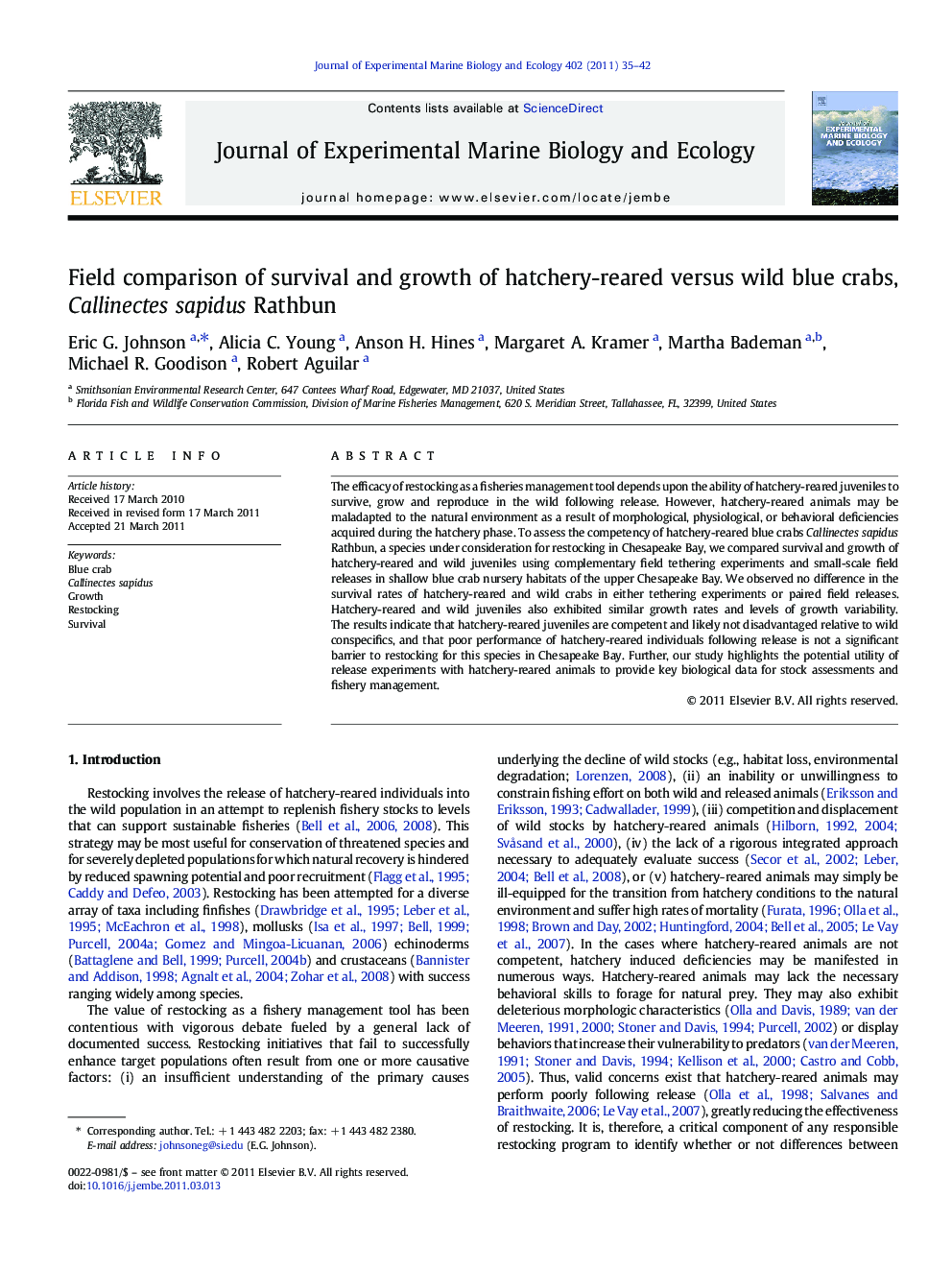| Article ID | Journal | Published Year | Pages | File Type |
|---|---|---|---|---|
| 4396239 | Journal of Experimental Marine Biology and Ecology | 2011 | 8 Pages |
The efficacy of restocking as a fisheries management tool depends upon the ability of hatchery-reared juveniles to survive, grow and reproduce in the wild following release. However, hatchery-reared animals may be maladapted to the natural environment as a result of morphological, physiological, or behavioral deficiencies acquired during the hatchery phase. To assess the competency of hatchery-reared blue crabs Callinectes sapidus Rathbun, a species under consideration for restocking in Chesapeake Bay, we compared survival and growth of hatchery-reared and wild juveniles using complementary field tethering experiments and small-scale field releases in shallow blue crab nursery habitats of the upper Chesapeake Bay. We observed no difference in the survival rates of hatchery-reared and wild crabs in either tethering experiments or paired field releases. Hatchery-reared and wild juveniles also exhibited similar growth rates and levels of growth variability. The results indicate that hatchery-reared juveniles are competent and likely not disadvantaged relative to wild conspecifics, and that poor performance of hatchery-reared individuals following release is not a significant barrier to restocking for this species in Chesapeake Bay. Further, our study highlights the potential utility of release experiments with hatchery-reared animals to provide key biological data for stock assessments and fishery management.
Research highlights► Compared survival and growth of hatchery-reared and wild blue crab juveniles. ► No difference in survival or growth rates of hatchery-reared and wild blue crabs. ► Survival of hatchery-reared crabs after release is not a barrier to restocking. ► Release of hatchery-reared animals can provide key biological data for wild stocks.
